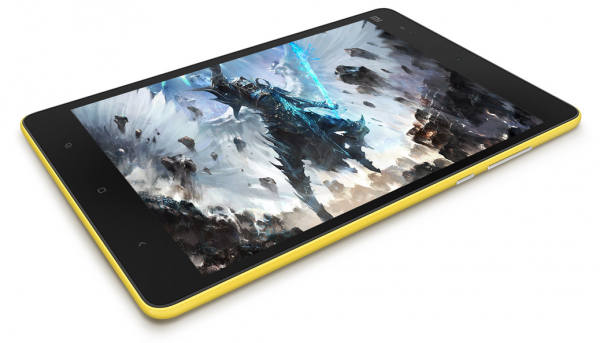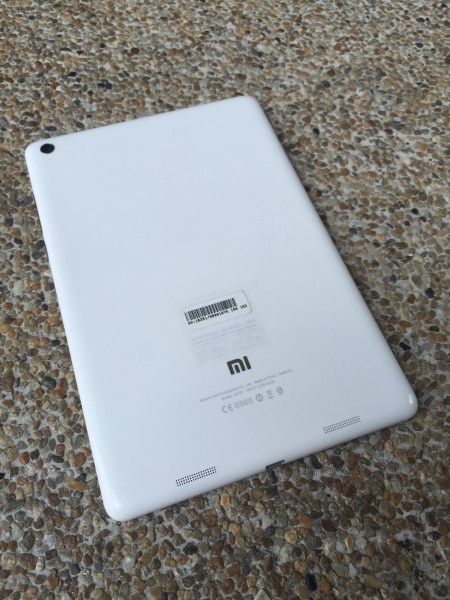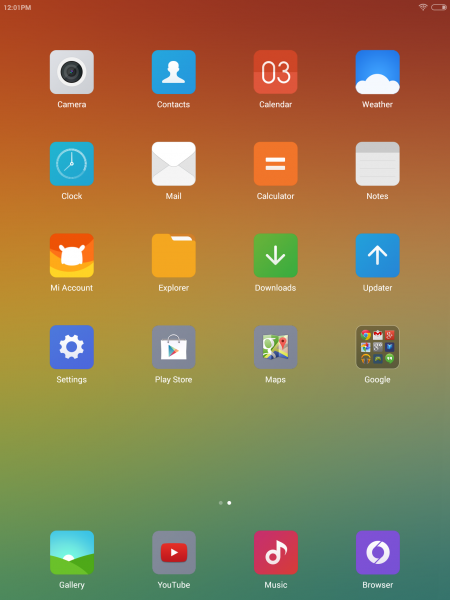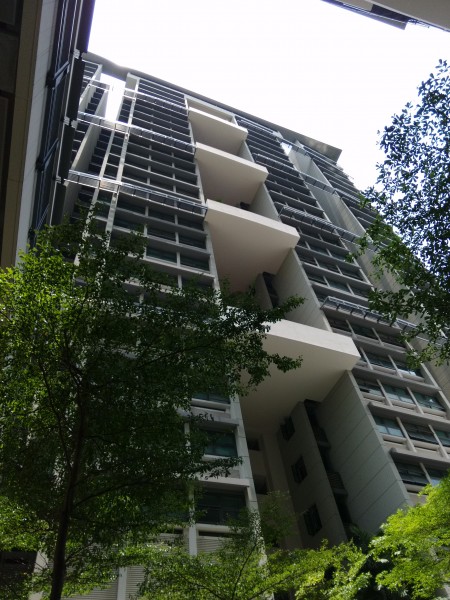
True to Xiaomi’s style, the first tablet from the world’s third largest smartphone maker has a price tag that eats the competition for lunch, but will its performance and day-to-day use be equally compelling?
Design and screen
At first glance, the Mi Pad’s resemblance to the iPad Mini is undeniable. An inevitable comparison revealed that its 202 x 135.4 x 8.5mm frame is close to the dimensions of the iPad Mini 3, but 29 grams heavier at 360g.
The additional heft becomes noticeable after 10 to 15 minutes of use, a problem that is compounded by a glossy plastic rear that is a little slippery to offer a secure grip. Well, at least the white paint will make the fingerprints less visible.

And like the iPad Mini 3, the Mi Pad’s 7.9-inch screen has a 2,048-by-1,536 pixel resolution, and is hardened with Gorilla Glass 3 to guard against scratches and light drops. Its reflective screen also makes the tablet less usable outdoors.
The Mi Pad’s 4:3 aspect ratio means you can expect black borders at the top and bottom of the screen while watching widescreen videos. Considering that most folks are likely to watch videos on a tablet of this size, a widescreen 8.4-inch screen with a 16:9 aspect ratio would make more sense.
The full-black front — with its thin borders and slightly rounded corners — looked like Xiaomi took a few design cues from the iPad Mini. But what differentiates the Mi Pad from its rival is the trademark Mi logo on the top-left, and the notification LED to the left of the front camera.
Even the symbol on the capacitive Home button looks inspired by Apple. It is flanked by the Recent Apps and back buttons that are standard on many Android devices, but with the back button placed unintuitively on the right.
I personally feel it might have been better to place the volume controls on the left of the device, so they are less likely to be confused with the power button.
Performance and battery life

The similarities do not end when the device powers up. The Android 4.4.4-based MIUI 6 on the Mi Pad uses brighter and flatter colours than its predecessor, much like iOS 8 and Google’s Material Design visual language in Android 5.0 Lollipop.
Like iOS, MIUI eschews an app drawer for simplicity but like Android, it offers home screen widgets by way of a dedicated canvas that can be reached by swiping to the leftmost screen. On top of that, MIUI can be customised with numerous themes downloadable from Xiaomi’s theme store.
One of the first devices to be powered by Nvidia’s Tegra K1 processor, the Mi Pad bulldozes through videos, web surfing and general navigation with ease.
Its GeForce Kepler graphics solution was built with gaming in mind and games seem to recognise that. It was clear Asphalt 8: Airborne ran at high quality settings by default, but the high-resolution gave it skipped frames. It might be ideal to dial down the graphical settings slightly if the game allows for it.
Combined with 2GB of RAM and a well-optimised operating system, the Mi Pad felt like it was running on steroids. Its 16GB of internal storage is easily expanded through its micro SD slot that accepts memory cards of up to 128GB.
When hooked up to a Wi-Fi network, the tablet lasted slightly more than a day with nearly 10 hours of active use that included web surfing, watching a few shows and some gaming. It is a respectable figure for a 7.9-inch slate with a 6,700mAh battery pack.
The camera on the Mi Pad is functional, but nothing to shout about. Daylight shots are good but the same cannot be said for those taken in low lighting conditions.



Conclusion
The Mi Pad is a power user’s dream. It performs speedily, offers good battery life and plenty of room for tweaks. It may have a plasticky build and is a little heavier than the iPad Mini, but these are small concessions for a device that costs only S$299.
What was disappointing, however, was Xiaomi’s unwillingness to step out of the shadow of Apple and into the limelight as a fast-rising giant.
Thankfully, Xiaomi’s newer crop of devices showed it is capable of churning out devices that are not complete carbon copies of its competitors. This is a respectable development that I hope will continue so as to increase Xiaomi’s appeal and help the company steer clear of crippling lawsuits.






